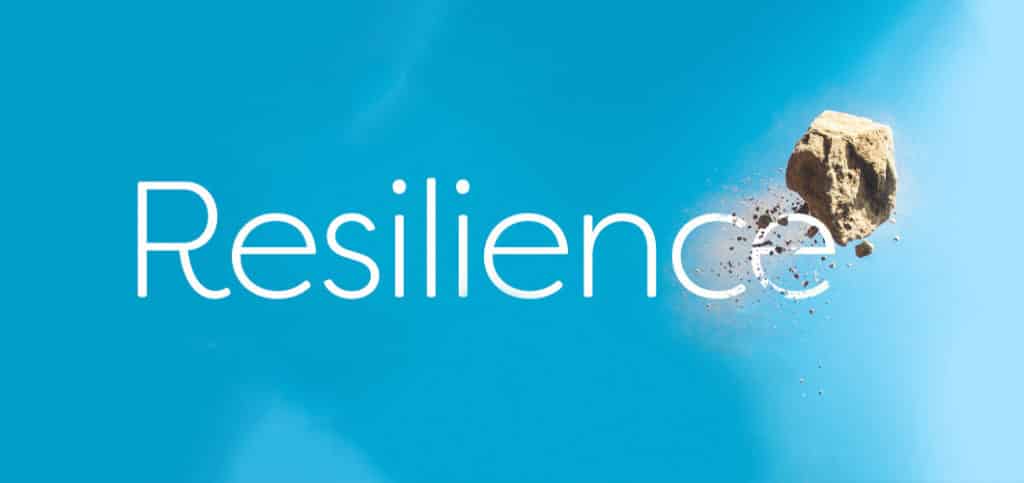Make Resilience the New North Star of Your L&D Strategy

There’s a good case for Resilience as the centerpiece to address successful strategic learning needs on every level, from the individual to the organization as a whole.
For over ten years, we have been talking about and observing the acceleration of change in our ecosystems and on every level of the organizations we work with and often we have been referring to VUCA (Volatility, Uncertainty, Complexity, and Ambiguity) as a shorthand to refer to the new realities of business. It’s a term that best encapsulated how we feel about the modern, accelerated world.
It might, at times, have been both confused and overused, but VUCA has served as a helpful framework to raise awareness and generated ways to overcome some of its associated challenges.
Today, we spend less and less time on this. While the education system hasn’t been (and in most cases still isn’t) preparing us to the reality of today’s challenges, few employees doubt that change is the new constant and that learning will forever be part of any job. Everybody knows the huge shifts companies like Facebook, Tencent or Airbnb have meant to the ecosystems they touch. Digital platforms have created a new breed of business models and let’s not try to summarize the global power shifts and socioeconomic developments. It’s a war zone. We get it.
However, we realize that with most of our clients, our conversations have evolved. We know VUCA is here to stay, but there is one word that has started to stands out as the answer to all this mayhem: Resilience.
Resilience has proven to be a great north star in strategic learning and development because it takes us a step further. It looks at remedies from within the organization and it can be applied to all dimensions where change takes place: The organizational, team and individual level.
What toolset, skillset, and mindset do we need to develop to become resilient?
1. Building Shock-Resistant Organizations
Let’s start at the highest level. Values such as clarity, loyalty, quality, reliability, responsibility, courage, and endurance all contribute to resilience on an organizational level. All of them crucial in the volatile and ambiguous context we face.
While it is tempting to focus mainly on technology’s role in facilitating exchanges and supporting decisions, we need to remember that the only thing truly evolving organizations are shifts in human behavior.
In this context, there is a special relationship between Purpose and Resilience which deserves special mention. Purpose gives organizations a guiding compass to empower decision making when swift and decisive action is needed and enables honest and positive engagements with internal and external stakeholders.
Purpose provides stability but it doesn’t focus on protecting the status quo. Purpose makes a company bulletproof without the armor.
A resilient company also is highly connected to the market, their customers and the wider ecosystems they touch. Whereas traditional organizations tend to spend a lot of time focused on themselves and getting lost in internal debates, modern companies put the client at the core of their attention and focus structures and decision-making on customers as the primary measure.

2. What Makes A Resilient Team?
The team level is where learning and development efforts usually have their most immediate impact. This is where skills and toolsets are applied. It is fertile ground for change — but often, just starting to “do things differently” leaves people on edge. As a relatively fluid concept in most organizations, a team needs to be able to be productive while striking the balance between withstanding pressures from outside, while staying open and understanding their customers.
Teams need to develop a shared understanding of their stakeholder’s needs, challenge each other’s assumptions and resist becoming an echo chamber of opinions and approaches.
As we recognize diversity as one of the main competitive advantages for the future, Organizations acknowledge that the possibility for employees to bring their true self to work and to interact with peers without fear is essential to productivity and performance and will, in the long run, deliver better outcomes.
As research has shown, psychological safety is one of the main factors that make a successful team and allows an entrepreneurial culture to thrive.
3. Creating Space & Enabling Focus
In the end, teams and organizations are both organisms that are built by living and breathing individuals that run according to laws of biology, built over centuries of evolution. They are difficult to change — yet, a better understanding enables us to take action and adjust behaviors where needed.
We are working with a brain that is 10,000 years old and incredibly effective at doing one thing, especially under pressure: It triggers fight or flight reactions in split-seconds. Unfortunately, this capacity is what keeps us from performing on an intellectual level and making unbiased decisions.
Self-regulation and mindfulness are ways to ensure we train our brain as we would train a muscle, gaining back control over those split seconds where our animal brain normally would take over. Latest neuroscientific research shows our brain might be stuck in old ways, but it can be trained!
There is a distinction to be made here: Resilience should not be understood as the ability to walk through walls. The Harvard Business Review wrote under the headline “The Dark Side of Resilience”:
… some people resemble a superhero cartoon character that runs through a brick wall: unemotional, fearless, and hyper-phlegmatic. To protect against psychological harm, they deploy quite aggressive coping mechanisms that artificially inflate their egos.
This describes resilience that is built through hardship. That is not what we are talking about here.
Leading through example and being able to contribute positive microexpressions and micro-actions have a huge impact on other people’s wellbeing and how effective change can be driven. Becoming aware of those small instances where we have a choice to adapt our behavior is key.
This is not a finished framework. We are developing this approach together with our clients constantly in our program designs. Let us know: What other elements are crucial to becoming more resilient on an organizational, team and individual level?
Author
Subscribe to get Access to Exclusive Content





